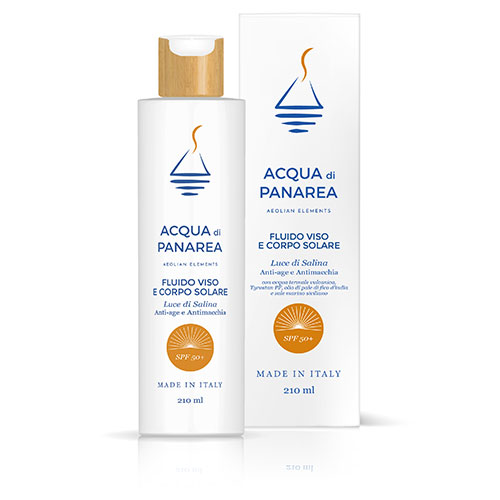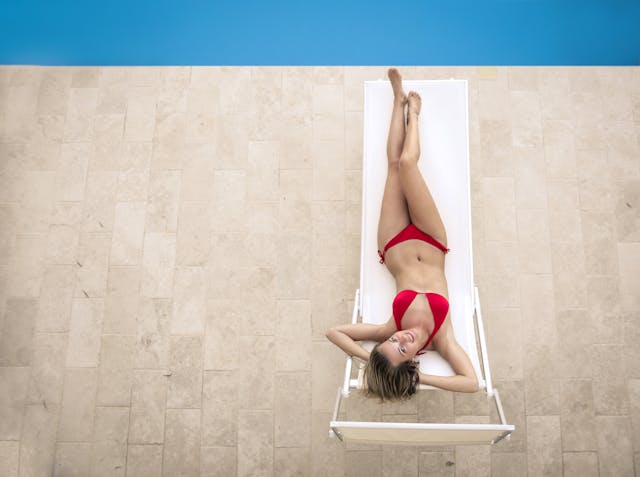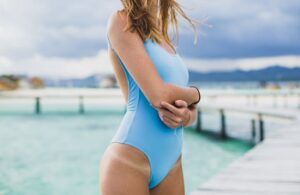When it comes to sunscreen, the skin on the face requires special attention. Not only is it the part most exposed to UV rays, but it is also most susceptible to the appearance of dark spots, especially with factors such as aging and the use of inappropriate cosmetic products.
I facial sunscreens stain-resistant are formulated to offer dual action: protecting against the harmful effects of the sun and preventing or mitigating hyperpigmentation. There are several stain-resistant sunscreens on the market, but choosing the best one is critical to preserving the health of your facial skin.
Let's discover together the best anti-stain facial sunscreens, perfect for maintaining glowing, even skin all year round.
Our stain-resistant and anti-aging sunscreens
Sun protection is the secret to youthful, glowing skin, but it is important to know how to choose the most suitable products because not all sunscreens are created equal.
Our stain-resistant and anti-aging sunscreens combine the effectiveness of a advanced UV protection with specific ingredients to fight skin aging and prevent dark spots.
With innovative formulations and carefully chosen ingredients, these products not only defend the skin from sun damage, but also help it maintain a fresh, even and radiant appearance over time. Our sunscreens can become your daily ally for flawless, ageless skin.
A anti-dark spot sunscreen effective must possess several characteristics to ensure visible and lasting results. First of all, it must contain broad-spectrum sun filters, essential to prevent the formation of new stains caused by UV rays.
Lightening ingredients, are essential to diminish existing blemishes, evening out skin tone. However, this is not enough, because they are also essential to the antioxidants that go to protect the skin from environmental damage and free radicals, which can worsen hyperpigmentation.
This type of cream should be formulated with moisturizing and soothing ingredients, such as hyaluronic acid and aloe vera, to keep the skin soft and reduce any irritation. A light texture, which absorbs quickly, provides comfort and facilitates daily application.
The anti-stain and anti-aging sunscreen fluid Light of Salina is formulated precisely according to these characteristics, presenting itself as a great product to know and use in your daily life.

It is a sunscreen light and easily absorbed texture, which has a SPF 50+. Remember that for fair, sensitive or not yet tanned skin, a high SPF is essential because it allows you to tan safely, avoiding dangerous and annoying burns or irritation.
Light of Saline is exclusively formulated with natural and vegetable raw materials, which make this innovative sunscreen the ideal choice for those who want a 'even and safe tan.
Thanks to a blend of UVA-UVB shielding filters, Saline Light protects the epidermis from the very first exposures, making it perfect for even the lightest and most delicate skin. Natural active ingredients, such as theArgan oil and the stem cells from red grapes, nourish and regenerate the skin, while thehyaluronan and thethermal water of volcanic origin provide deep hydration, making the skin supple and radiant.
Luce di Salina not only defends the skin from external agents such as sun, wind and saltiness, but also promotes a'intense and long-lasting tan thanks to the Tyrostan PF, a melanogenesis activator that enhances a natural amber complexion. With a mix of valuable oils and antioxidants, this emulsion prevents dehydration, ensuring healthy, firm and radiant skin all summer long. All with a natural anti-stain and anti-aging effect.
Our advice is to apply Saline Light about 30 minutes before sun exposure so that your skin can absorb the product perfectly. The cream will need to be reapplied frequently throughout the day and, in particular, when there is heavy sweating or long bathing.
How to choose the best sunscreen that doesn't stain
Choosing the right sunscreen is key to protecting the skin from harmful UV rays and preventing premature aging and skin spots.
This is often overlooked, but it is essential to choose a sunscreen that does not stain your skin, and to do this it is helpful to have some tips that we are ready to give you. You should, in fact, always choose the best sunscreen that not only offers adequate protection, but also prevents the occurrence of annoying spots.
La formulation is the first thing to consider. Choose appropriate textures that are easily absorbed and rich in ingredients to prevent hyperpigmentation of the skin.
Another important aspect is avoid potentially comedogenic ingredients, that is, which can clog pores, causing blemishes and, consequently, stains.
Heavy ingredients such as mineral oils, lanolin and some silicones can contribute to this problem. Opt for non-comedogenic formulations, especially if you have oily or acne-prone skin.
To prevent the appearance of dark spots, it is essential to choose a sunscreen that contains Specific ingredients to control hyperpigmentation and which can help lighten existing blemishes while preventing new ones from forming. These ingredients not only protect against UV damage, but also act as a powerful antioxidants, fighting free radicals and reducing oxidative stress on the skin.
Also the sun protection factor (SPF) is one of the important aspects to consider when choosing a sunscreen. To avoid spots and skin damage, it is advisable to. choose an SPF of at least 30, which offers adequate protection in most situations. If you have particularly sensitive skin or already have dark spots, opt for an SPF 50+.
We also recommend that you check that the sunscreen offers protection against UVA as well as UVB rays. UVA rays penetrate deeper into the skin and are primarily responsible for photoaging and the appearance of dark spots. Broad-spectrum protection ensures that the skin is defended against both UVA and UVB rays.
As mentioned earlier, it is also important to assess the sunscreen texture, which is a key aspect of ensuring that the product fits your skin well without leaving spots or residue.
If you have a oily or combination skin, opts for a light sunscreen, perhaps in gel or fluid form, which absorbs quickly and does not leave the skin shiny.
Le dry skins, on the other hand, could benefit from creamier textures which also offer extra hydration.
For those who play sports or live in very hot climates, the waterproof or sweat-resistant formulations are ideal. However, it is important to remember that these formulations tend to be denser and may need thorough cleansing to avoid product buildup that can occlude pores and cause blemishes.
Also always check the labels to make sure the product is Free of fragrances, artificial dyes and alcohol, which can irritate the skin and contribute to the formation of spots.
See also tips on how to avoid the worst sunscreens.
How to effectively apply sunscreen
Applying sunscreen effectively is an essential step in ensuring optimal protection of your skin from harmful UV rays. This is a concept that needs to be reiterated because, despite widespread awareness of the importance of sunscreen, many people do not apply the product in the right way, thus reducing its effectiveness.
To begin with, it is important to Apply sunscreen to clean, dry skin. Although this may seem like obvious advice, it is important to reiterate the concept. In fact, applying products on a dry and cleansed skin allows the product to adhere better, thus going to create a uniform barrier against the sun's rays.
Applying the cream on sweaty or still damp skin can reduce its ability to adequately protect. Even if you use a water-resistant cream, it is always preferable to apply it on dry skin to ensure maximum effectiveness.
It also evaluates the amount of product to be applied, because this is also an important factor. To achieve the protection stated on the label, it is necessary to apply a sufficient amount of cream.
For the face, an amount equal to a dime is generally adequate, while for the body about 30 ml, corresponding to two tablespoons, is recommended. Often, people tend to apply less sunscreen than necessary, compromising the protection provided.
It is essential Apply sunscreen evenly to all exposed areas of the body. This includes often neglected parts such as the ears, neck, hands, and feet. The back of the hands, in particular, is often forgotten, but it is an area that can be heavily exposed to UV rays. The scalp, if uncovered, also needs protection, especially for those who have sparse hair or use hairstyles that leave large areas exposed.
A error common is Apply sunscreen only just before exposure to the sun. In fact, it is advisable to apply it at least 15 to 30 minutes before going out to allow the skin to fully absorb it and create an effective protective layer.
La reapplication of sunscreen is another key step. Even water-resistant creams lose effectiveness after swimming, sweating or simply after a few hours of exposure.
It is therefore necessary to reapply the product every two hours, or immediately after getting out of the water or sweating profusely. Remember that even if you no longer feel moist skin, the sun continues to damage it, so constant protection is a must.
Finally, sunscreen is not just for days at the beach or during outdoor activities. Even in the city, during a normal workday or a walk, UV rays can penetrate through windows and affect the skin.
For this reason, thedaily application of sunscreen should become an integral part of your skin care routine, like washing your face or applying moisturizer.
See also: how to tan at home.
Tips for a safe and long-lasting tan
Achieving a safe and long-lasting tan requires a balanced approach that combines protection, hydration, and time. Gradually expose yourself to the sun is essential to avoid sunburn, which is not only harmful to the skin but also compromises the ability to achieve an even and lasting complexion.
Start with short exposures and gradually increasing the time spent in the sun allows the skin to develop a natural defense, reducing the risk of damage.
Use sunscreen with an appropriate factor is essential. Many people believe that sunscreens prevent tanning, but they actually protect the skin from harmful UV rays while allowing for a healthy, even complexion.
Apply the cream regularly, even after bathing or sweating, ensures that the protection remains effective and that the tan develops gradually and safely, and we are sure that this is just what you want.
Also thehydration of your skin is important aspect. You must always remember that sun exposure tends to dehydrate the skin, causing it to dry out and peel more easily, which can affect your tan.
Use an after-sun or moisturizer after sun exposure helps keep the skin supple and soft, prolonging the duration of the tan. In addition, moisturizing from within is equally important: drink plenty of water Helps keep the skin healthy and ready to regenerate.
Another useful practice for a lasting tan is. exfoliate the skin regularly, but gently. This removes dead cells and allows the tan to develop more evenly, avoiding spots and discolorations. However, it is important not to overdo it, as too aggressive exfoliation can irritate the skin and reduce the intensity of the tan.
Finally, a diet rich in antioxidants and beta-carotene can support the tanning process. Foods such as carrots, tomatoes, spinach, and nuts contain nutrients that help protect the skin from within and intensify the complexion. A balanced diet, combined with proper sun exposure and protection, can make a difference in the quality and duration of the tan.
To achieve a safe and long-lasting tan, it is necessary to combine all these factors, respecting the body's natural timing and protecting it from possible sun damage. Only in this way can you achieve a radiant complexion that lasts over time, without compromising the health of your skin.




